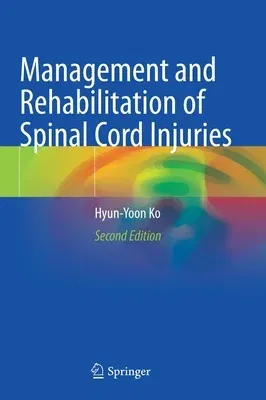1. Introduction.- 2. Development and functional anatomy of the spinal
cord.- 3. Kinesiology and kinematics of extremities for functional
retraining.- 4. Functional goals according to the level of injury.- 5.
Biomechanics of the spinal cord.- 6. Fractures of the spine.- 7. Imaging
of spinal cord injuries.- 8. Pharmacotherapy in spinal cord medicine.-
9. Physical and neurolgocial examination of spinal cord injuries.- 10.
Epidemiology of spinal cord injuries.- 11. Standards for neurological
classification of spinal cord injuries.- 12. Spinal shock and its
clinical implications. 13. Acute phase management of spinal cord
injuries.- 14. Nontraumatic spinal cord injuries.- 15. Incomplete
syndromes.- 16. Cauda equina and conus medullaris injuries.- 17.
Posttraumatic syringomyelia.- 18. Automonic nervous system in spinal
cord injuries.- 19. Cardiovascular dysfunctions.- 20. Respiratory
dysfunction and care.- 21. Autonomic dysreflexia.- 22. Orthostatic
hypotension and supine hypertension.- 23. Venous thromboembolism:
prevention and treatment.- 24. Electrolyte disorder.- 25. Metabolic
syndrome.- 26. Voiding dysfunction and genitourinary complications.- 27.
Bowel dysfunction and gastrointestinal complications.- 28. Sexuality
changes.- 29. Pressure injuries.- 30. Thermoregulatory dysfunction.- 31.
Spasticity.- 32. Heterotopic ossification.- 33. Pain types and
taxonomy.- 34. Child spinal cord injuries/lesions.- 35. Elderly spinal
cord injuries.- 36. Dual injury.- 37. Sleep disorders.- 38.
Neurodeterioration.- 39. Psychological intervention.- 40. Upper
extremity intervention.- 41. Walking dysfunction.- 42. Wheelchairs and
wheelchair mobility.- 43. Follow-up care of spinal cord injuries.

